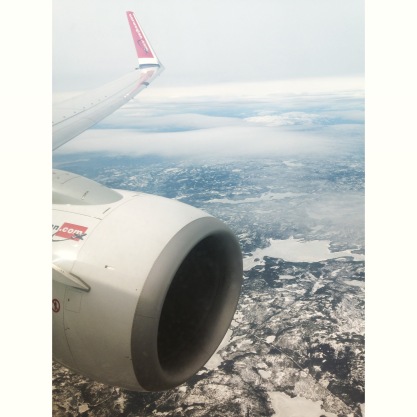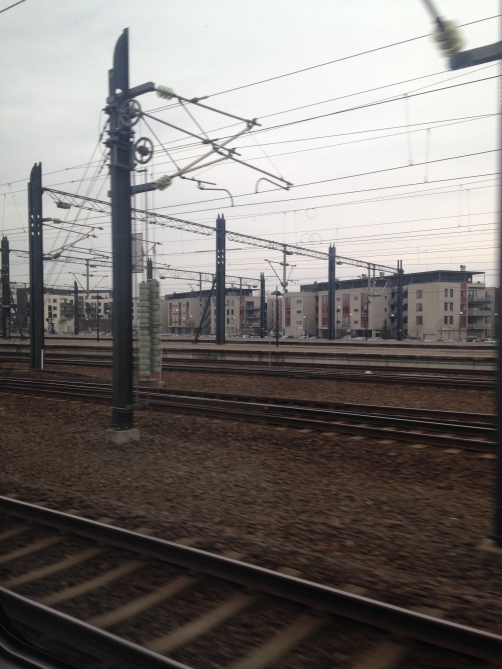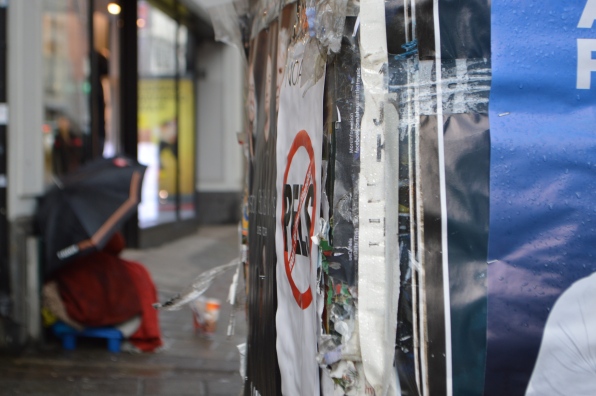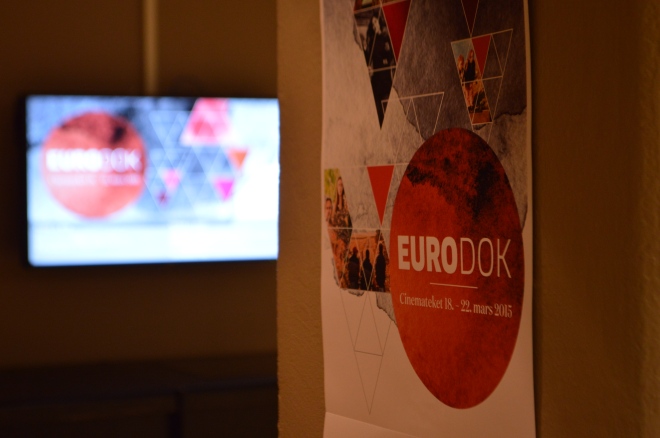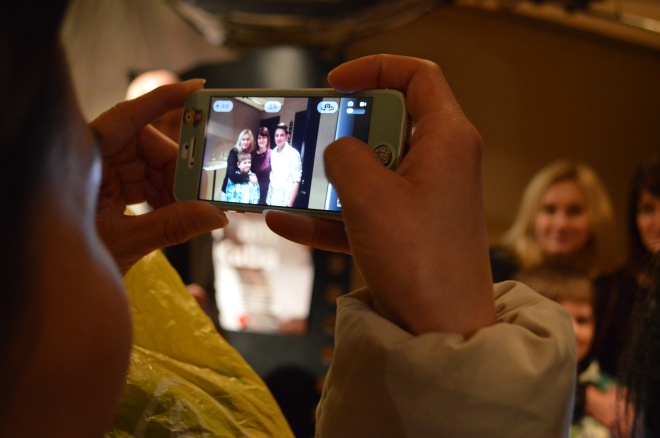Day 2-
We went into the centre of Oslo this morning, and witnessed the first solar eclipse this century. A lot of people were out to watch the event, and looking out of windows. Walking around we noticed a poster which said ‘down with the USA the worlds biggest terrorist’, picturing th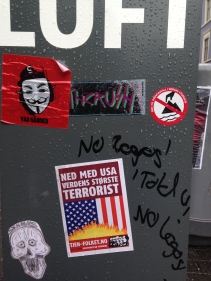 e USA flag surrounded by flames on the side of an electricity box.This stood out, as it was the first anti-terrorist item we have came across since being in Norway. The area this was in was rife with graffiti art on shop shutters and any spare wall there seemed to be available.
e USA flag surrounded by flames on the side of an electricity box.This stood out, as it was the first anti-terrorist item we have came across since being in Norway. The area this was in was rife with graffiti art on shop shutters and any spare wall there seemed to be available.
Walking into the centre of Oslo, there were a lot of fast food restaurants, with many of the workers being of Middle Eastern decent, rather than Norwegian. This stood out to us, as we saw this regularly while walking into Oslo.
Within the city, there are a lot of modern buildings and globally recognised sh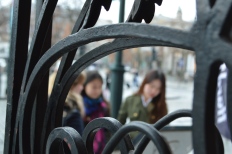 ops such as Micheal Kors and Starbucks. This contrasts with the architecture just a few minutes out of the centre, as they are very
ops such as Micheal Kors and Starbucks. This contrasts with the architecture just a few minutes out of the centre, as they are very much period, and classic Norwegian design. This shows how over time, the influence of American chains have drastically altered Oslo’s centre to a much more commercial area. Music is a constant within the centre, with near enough all the music played is American
much period, and classic Norwegian design. This shows how over time, the influence of American chains have drastically altered Oslo’s centre to a much more commercial area. Music is a constant within the centre, with near enough all the music played is American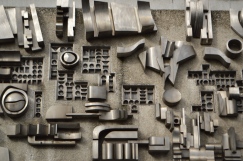 chart music apposed to Norwegian. This further demonstrates the Western Europe and American influence on the country.
chart music apposed to Norwegian. This further demonstrates the Western Europe and American influence on the country.
We met our second gatekeeper at 4pm at our hotel, he was the president of the 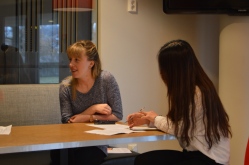 Islamic Society at Oslo University, and we were privileged to be able to interview him on his experience as a Muslim living within Norway, and the issues which have arose within recent times. During the interview, he mentioned how there is a growing harmony between Norwegian and Muslim resistance. However, that there is an on-going,
Islamic Society at Oslo University, and we were privileged to be able to interview him on his experience as a Muslim living within Norway, and the issues which have arose within recent times. During the interview, he mentioned how there is a growing harmony between Norwegian and Muslim resistance. However, that there is an on-going, 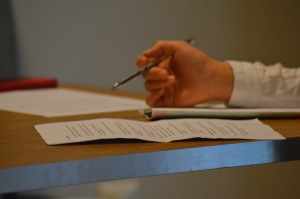 underling tension that is always present. He mentioned a recent event, where a white, Norwegian man spat at a Muslim woman who was wearing a hijab. The man was later arrested and fined for the incident. He also shed light on the rise of many anti-Islamic groups within Norway, such as PEGIDA. Mentioning, how since recent events such as the Charile Habbo incident in France, and the shootings in Copenhagen, these
underling tension that is always present. He mentioned a recent event, where a white, Norwegian man spat at a Muslim woman who was wearing a hijab. The man was later arrested and fined for the incident. He also shed light on the rise of many anti-Islamic groups within Norway, such as PEGIDA. Mentioning, how since recent events such as the Charile Habbo incident in France, and the shootings in Copenhagen, these 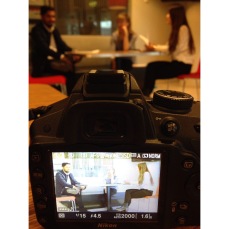 groups have had a surge in global support.
groups have had a surge in global support.
The interview helped us a lot in shedding light on what its like to be a Muslim in a predominantly white nation, and the recent tensions which have arose from these events.
 After the interview, we made our way back into the centre for dinner. On our way we saw the palace in the distance, and we were surprised by how close it was to the main shopping district. After dinner, we explored the centre and saw a parade to celebrate the Kurdish New Year, with a large turnout holding flags, banners and flames in order to celebrate the event.
After the interview, we made our way back into the centre for dinner. On our way we saw the palace in the distance, and we were surprised by how close it was to the main shopping district. After dinner, we explored the centre and saw a parade to celebrate the Kurdish New Year, with a large turnout holding flags, banners and flames in order to celebrate the event.

Day 3-
We woke up and had breakfast together, planning the day ahead. We have been told a lot by the people we have met so far, that our hotel is next to a 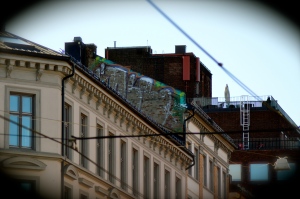 hipster area, and that we should check it out. This morning, we took a walk around the area. Straight away we noticed the vast difference in food prices, as in the centre prices for main meals are around 160-230 krn (…). A lot of the places we first saw in the area were independent takeaway shops, selling kebab and Indian
hipster area, and that we should check it out. This morning, we took a walk around the area. Straight away we noticed the vast difference in food prices, as in the centre prices for main meals are around 160-230 krn (…). A lot of the places we first saw in the area were independent takeaway shops, selling kebab and Indian 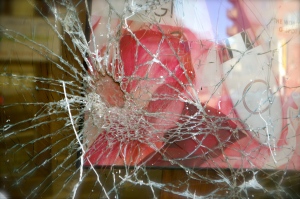 cuisine. The area we initially explored was very quite, and not many shops were present.
cuisine. The area we initially explored was very quite, and not many shops were present.
Walking further we realised we were walking towards a residential area, where many of the buildings were flats and apartments, all of individual design. The design of them really did fit in well with the ‘hipster’ image the area was trying to achieve. We later  found our way to the main shopping area, where we noticed all the shops were independently owned, drastically different to that in the centre. All the shops were boutiques, selling quirky clothing and antique items.
found our way to the main shopping area, where we noticed all the shops were independently owned, drastically different to that in the centre. All the shops were boutiques, selling quirky clothing and antique items.

We later met with our gatekeeper again, as he offered to take us on a tour of Oslo. We first caught a tram ride into the centre, which wasn’t cheap! It cost is 90krn (£7.50). We saw the  houses of parliament and palace, where we were able to get extremely close to which was strange to us, as at Buckingham Palace and
houses of parliament and palace, where we were able to get extremely close to which was strange to us, as at Buckingham Palace and  Downing Street, they are closed off and heavily guarded. Our gatekeeper also took us to the city hall, where we found the clock we found for out time lecture. It was a lot bigger than we imagined, and placed on a building which design didn’t fit with the design of the clock.
Downing Street, they are closed off and heavily guarded. Our gatekeeper also took us to the city hall, where we found the clock we found for out time lecture. It was a lot bigger than we imagined, and placed on a building which design didn’t fit with the design of the clock.

We went to the Nobel peace prize museum also, whic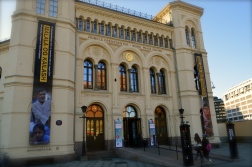 h was extremely interesting and enjoyable. Later traveling up a mountain to view Oslo by the sea, which we all enjoyed. From this we were able to see the mixture of period and commercial buildings. We also haven’t seen many gift shops in the city; maybe this is a reflection of Oslo not being a tourist attraction to many.
h was extremely interesting and enjoyable. Later traveling up a mountain to view Oslo by the sea, which we all enjoyed. From this we were able to see the mixture of period and commercial buildings. We also haven’t seen many gift shops in the city; maybe this is a reflection of Oslo not being a tourist attraction to many.
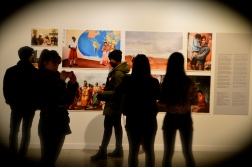 Within the centre we have seen many homeless women of Romanian and Muslim decent. From what we have seen they all tend to be within groups and seem controlled by who they approach and the tactics they use.
Within the centre we have seen many homeless women of Romanian and Muslim decent. From what we have seen they all tend to be within groups and seem controlled by who they approach and the tactics they use.
Talking to our gatekeeper, he mentioned how Norwegians don’t like halal meat being sold in Norway, and that many of the restaurants won’t mention that they sell halal unless they are asked. Because the animal rights groups within Norway appose to the ways the animal is killed, and thus the restaurants don’t want any confrontation from these activists. This was interesting to hear, as the day before he was mentioning how there is a growing harmony and acceptance within society. However, they are still apposing the selling of halal meat within Norwegian culture.
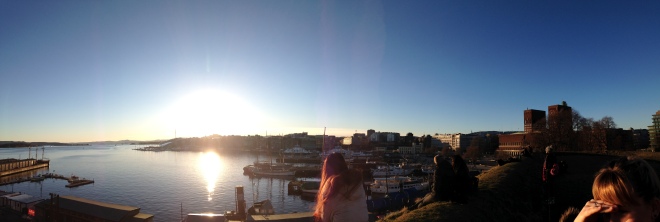
59.913869
10.752245
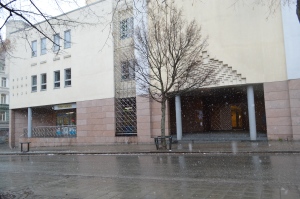
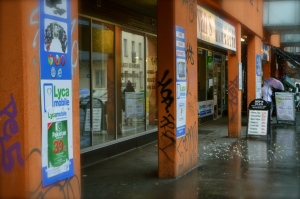
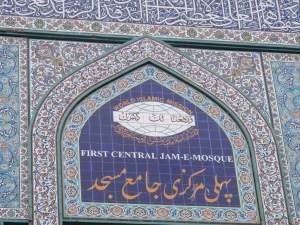
 r that day, but unfortunately it was locked and we could not get inside, so we decided to make our way to the Community Centre which is the Islamic Cultural Centre. On arriving at the Islamic Cultural Centre, it was clear that it was a lot bigger than any of the other mosques we have been to. However, it was still set back into a residential and shopping area, the building was of a cream colour which did not stand out on the street, there was a big sign on the side of the wall that read “The Islamic Cutural Centre Norway”.
r that day, but unfortunately it was locked and we could not get inside, so we decided to make our way to the Community Centre which is the Islamic Cultural Centre. On arriving at the Islamic Cultural Centre, it was clear that it was a lot bigger than any of the other mosques we have been to. However, it was still set back into a residential and shopping area, the building was of a cream colour which did not stand out on the street, there was a big sign on the side of the wall that read “The Islamic Cutural Centre Norway”.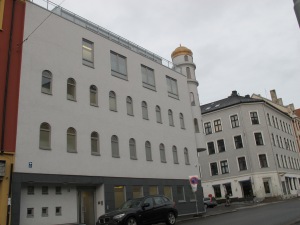
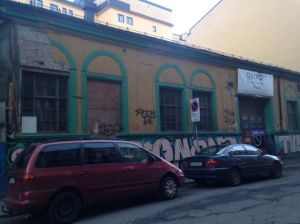


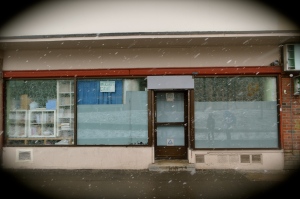
 row of shops and look like an ordinary building. It is not until you look at the up to the sky that you see the tiny Islamic symbol at the top of the spiral tower. The first one is the most common one. It is smallest of all mosques we saw today. We almost passed it when we realized that it is a mosque as it looks more like a office, blue windows and a square room, all the windows were blocked ou
row of shops and look like an ordinary building. It is not until you look at the up to the sky that you see the tiny Islamic symbol at the top of the spiral tower. The first one is the most common one. It is smallest of all mosques we saw today. We almost passed it when we realized that it is a mosque as it looks more like a office, blue windows and a square room, all the windows were blocked ou t with cardboard and curtains, you could not see in, unless you waited for someone to come out of the door, it wasn’t until this happened that we realized that it was a men’s mosque. There was some Islamic writing on the door, but you could barely see it, unless you walked up to the door, we were unsure of what this said. But passers by said that it was a mosque, but a very small mosque.
t with cardboard and curtains, you could not see in, unless you waited for someone to come out of the door, it wasn’t until this happened that we realized that it was a men’s mosque. There was some Islamic writing on the door, but you could barely see it, unless you walked up to the door, we were unsure of what this said. But passers by said that it was a mosque, but a very small mosque.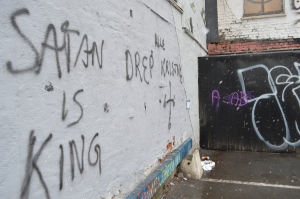 n on the side of abandoned buildings are car parks. Some of the other gr
n on the side of abandoned buildings are car parks. Some of the other gr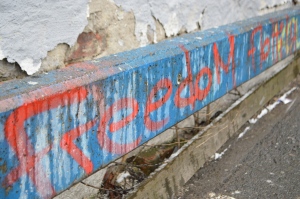 affiti was art; an individual had obviously taken their time to produce a piece of art of the side of the building to express how they are feeling. On observation it was clear that no one had even tried to scrub it away the graffiti, as it is very interesting to look at, it’s a way for people to express how they are feeling in the surrounding area.
affiti was art; an individual had obviously taken their time to produce a piece of art of the side of the building to express how they are feeling. On observation it was clear that no one had even tried to scrub it away the graffiti, as it is very interesting to look at, it’s a way for people to express how they are feeling in the surrounding area.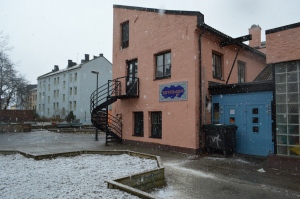
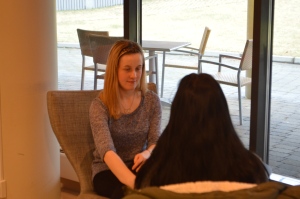


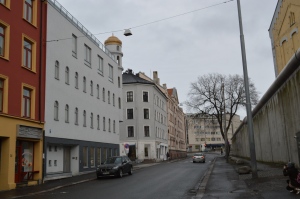 we saw was a Turkish mosque; which is not noticeable, it has a grey appearance and sits neatly back into the other buldings, we would not have noticed this mosque if we were not with our gatekeeper, the Turkish mosque was located by little boutique shops.
we saw was a Turkish mosque; which is not noticeable, it has a grey appearance and sits neatly back into the other buldings, we would not have noticed this mosque if we were not with our gatekeeper, the Turkish mosque was located by little boutique shops.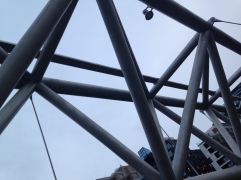 nd office area of Oslo, waling over the top of the central station. It gave us a different viewpoint of the City of Oslo, which was nice to see. Especially as the sun was going down, we wer
nd office area of Oslo, waling over the top of the central station. It gave us a different viewpoint of the City of Oslo, which was nice to see. Especially as the sun was going down, we wer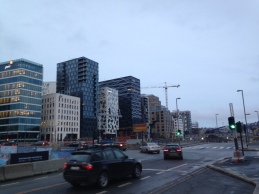 e able to see a new architecture and building project called ‘The Barcode’ which is new, modern and exciting for the City. This
e able to see a new architecture and building project called ‘The Barcode’ which is new, modern and exciting for the City. This also lead us to opera house, which is amazing, they had built the Opera house on a slight modern slant, but made it so it has modern and traditional Scandinavia in one. The Opera house over looked the ocean; you could see many different parts of the City of Oslo, old and new. Different layers of architecture and the different spaces they had used for different things.
also lead us to opera house, which is amazing, they had built the Opera house on a slight modern slant, but made it so it has modern and traditional Scandinavia in one. The Opera house over looked the ocean; you could see many different parts of the City of Oslo, old and new. Different layers of architecture and the different spaces they had used for different things.
 e USA flag surrounded by flames on the side of an electricity box.This stood out, as it was the first anti-terrorist item we have came across since being in Norway. The area this was in was rife with graffiti art on shop shutters and any spare wall there seemed to be available.
e USA flag surrounded by flames on the side of an electricity box.This stood out, as it was the first anti-terrorist item we have came across since being in Norway. The area this was in was rife with graffiti art on shop shutters and any spare wall there seemed to be available. ops such as Micheal Kors and Starbucks. This contrasts with the architecture just a few minutes out of the centre, as they are very
ops such as Micheal Kors and Starbucks. This contrasts with the architecture just a few minutes out of the centre, as they are very much period, and classic Norwegian design. This shows how over time, the influence of American chains have drastically altered Oslo’s centre to a much more commercial area. Music is a constant within the centre, with near enough all the music played is American
much period, and classic Norwegian design. This shows how over time, the influence of American chains have drastically altered Oslo’s centre to a much more commercial area. Music is a constant within the centre, with near enough all the music played is American chart music apposed to Norwegian. This further demonstrates the Western Europe and American influence on the country.
chart music apposed to Norwegian. This further demonstrates the Western Europe and American influence on the country.


 After the interview, we made our way back into the centre for dinner. On our way we saw the palace in the distance, and we were surprised by how close it was to the main shopping district. After dinner, we explored the centre and saw a parade to celebrate the Kurdish New Year, with a large turnout holding flags, banners and flames in order to celebrate the event.
After the interview, we made our way back into the centre for dinner. On our way we saw the palace in the distance, and we were surprised by how close it was to the main shopping district. After dinner, we explored the centre and saw a parade to celebrate the Kurdish New Year, with a large turnout holding flags, banners and flames in order to celebrate the event.




 houses of parliament and palace, where we were able to get extremely close to which was strange to us, as at Buckingham Palace and
houses of parliament and palace, where we were able to get extremely close to which was strange to us, as at Buckingham Palace and 

 h was extremely interesting and enjoyable. Later traveling up a mountain to view Oslo by the sea, which we all enjoyed. From this we were able to see the mixture of period and commercial buildings. We also haven’t seen many gift shops in the city; maybe this is a reflection of Oslo not being a tourist attraction to many.
h was extremely interesting and enjoyable. Later traveling up a mountain to view Oslo by the sea, which we all enjoyed. From this we were able to see the mixture of period and commercial buildings. We also haven’t seen many gift shops in the city; maybe this is a reflection of Oslo not being a tourist attraction to many.

